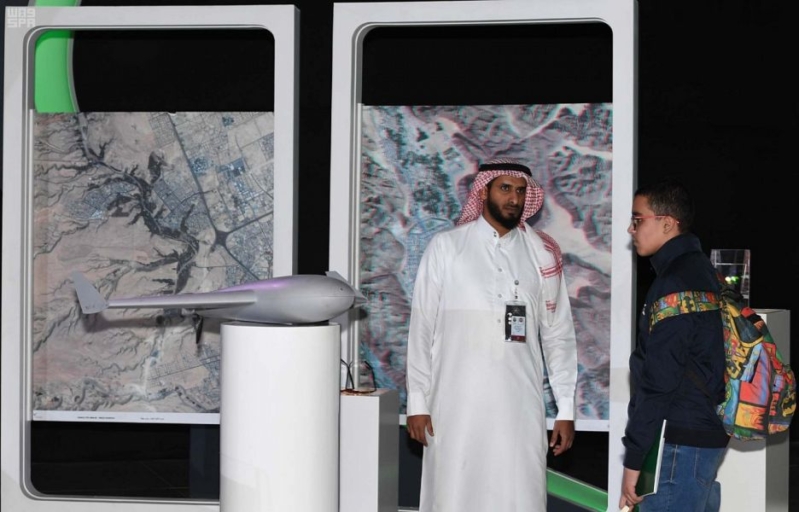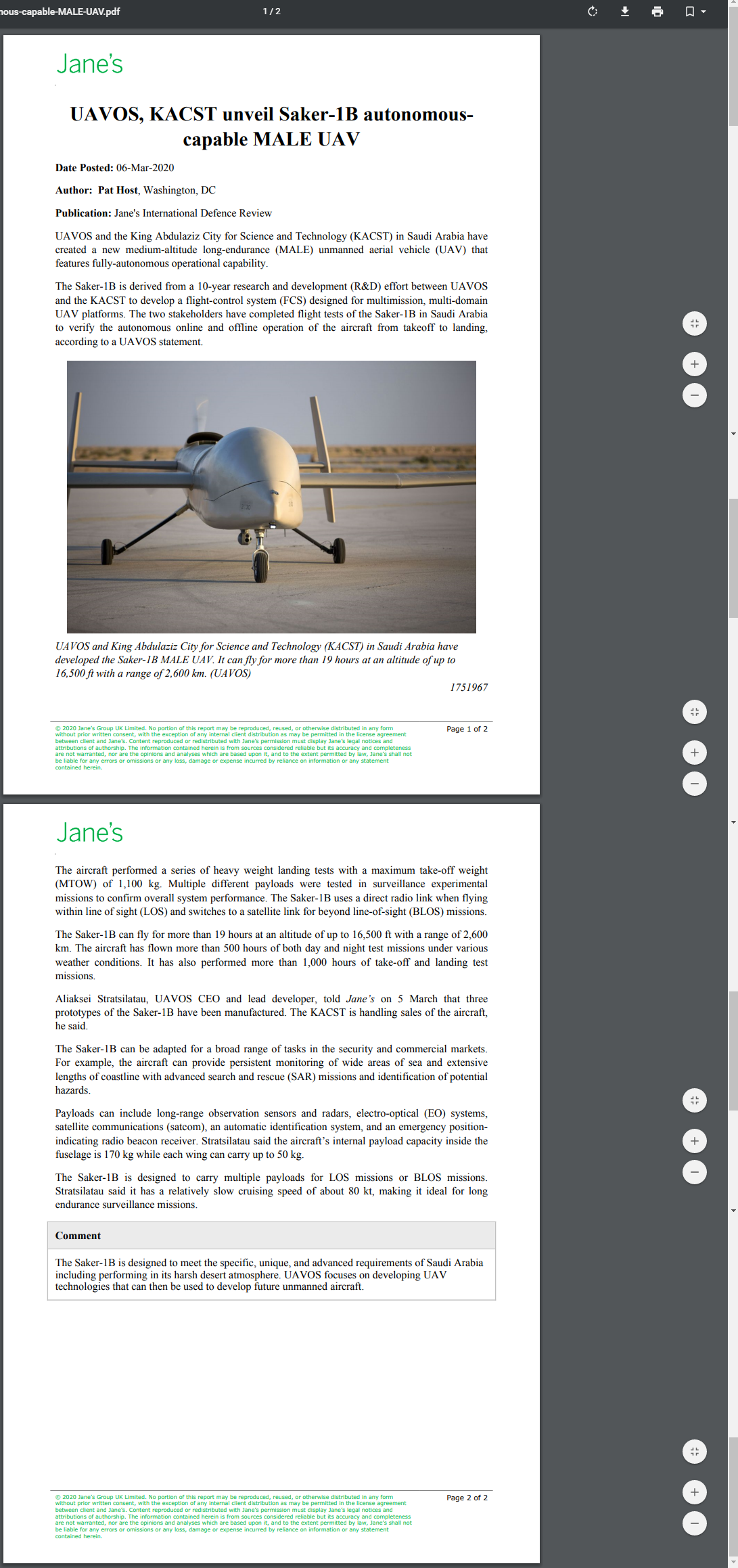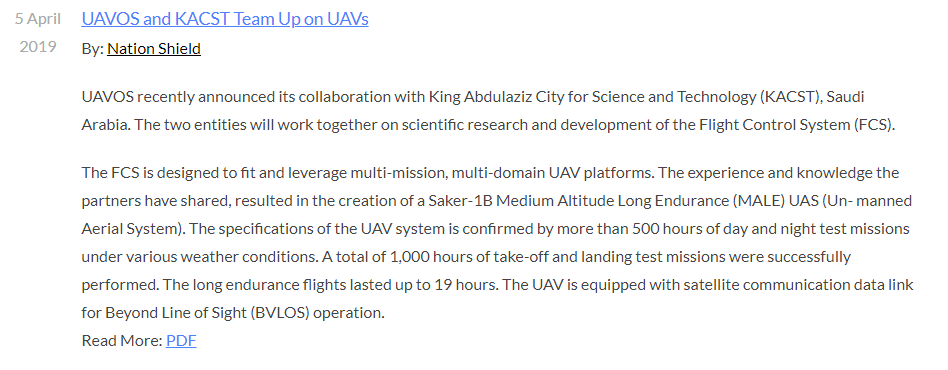تثبيت التطبيق
How to install the app on iOS
Follow along with the video below to see how to install our site as a web app on your home screen.
ملاحظة: This feature may not be available in some browsers.
أنت تستخدم أحد المتصفحات القديمة. قد لا يتم عرض هذا الموقع أو المواقع الأخرى بشكل صحيح.
يجب عليك ترقية متصفحك أو استخدام أحد المتصفحات البديلة.
يجب عليك ترقية متصفحك أو استخدام أحد المتصفحات البديلة.
نسخة محسنة من طائرة صقر1 Saker-1B
- بادئ الموضوع -F15D-
- تاريخ البدء
هل دخلت هذه الطائرات الخدمه الفعليه ولدى اي قطاعنسخة Saker-1A
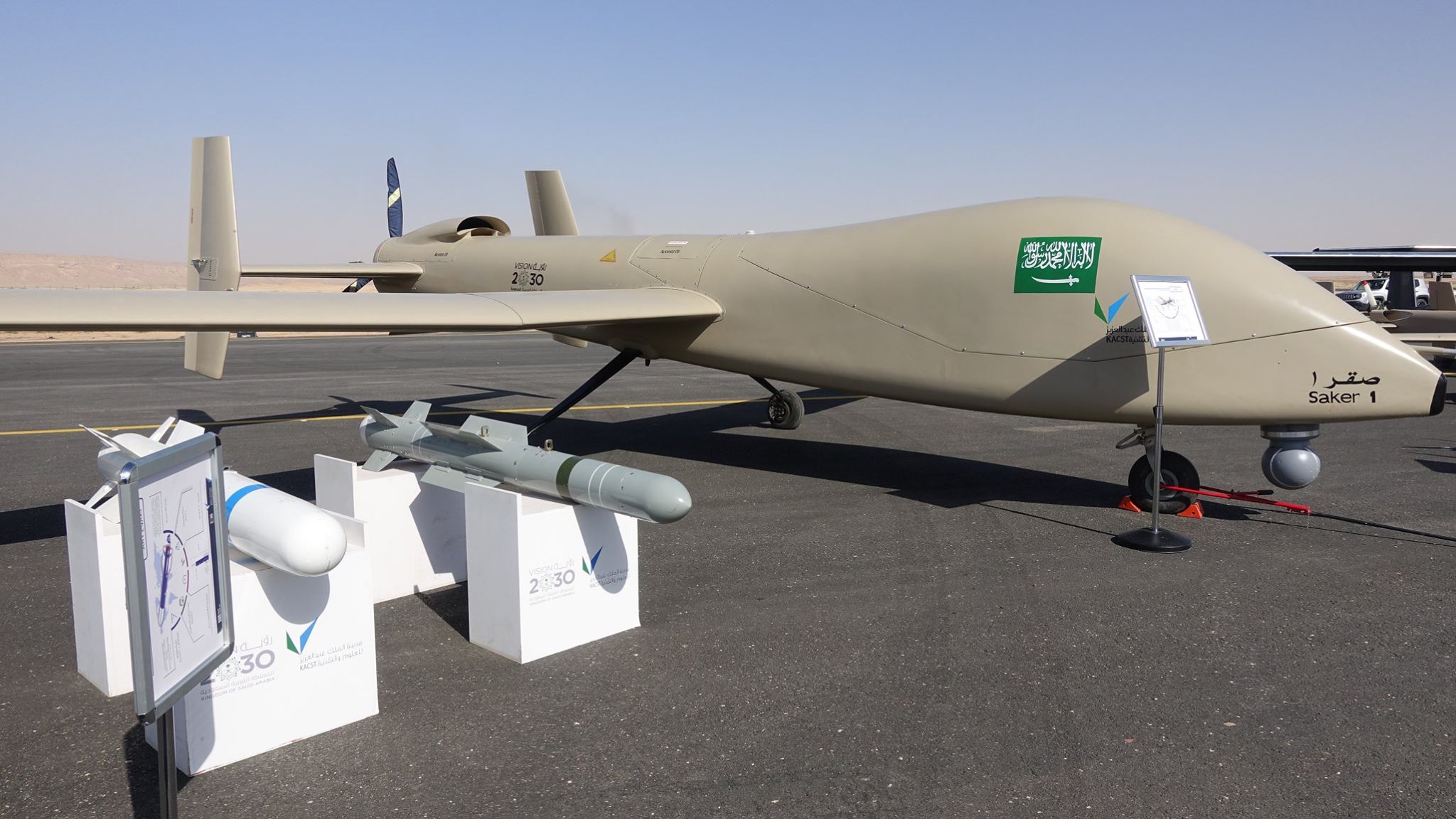
Saker-2
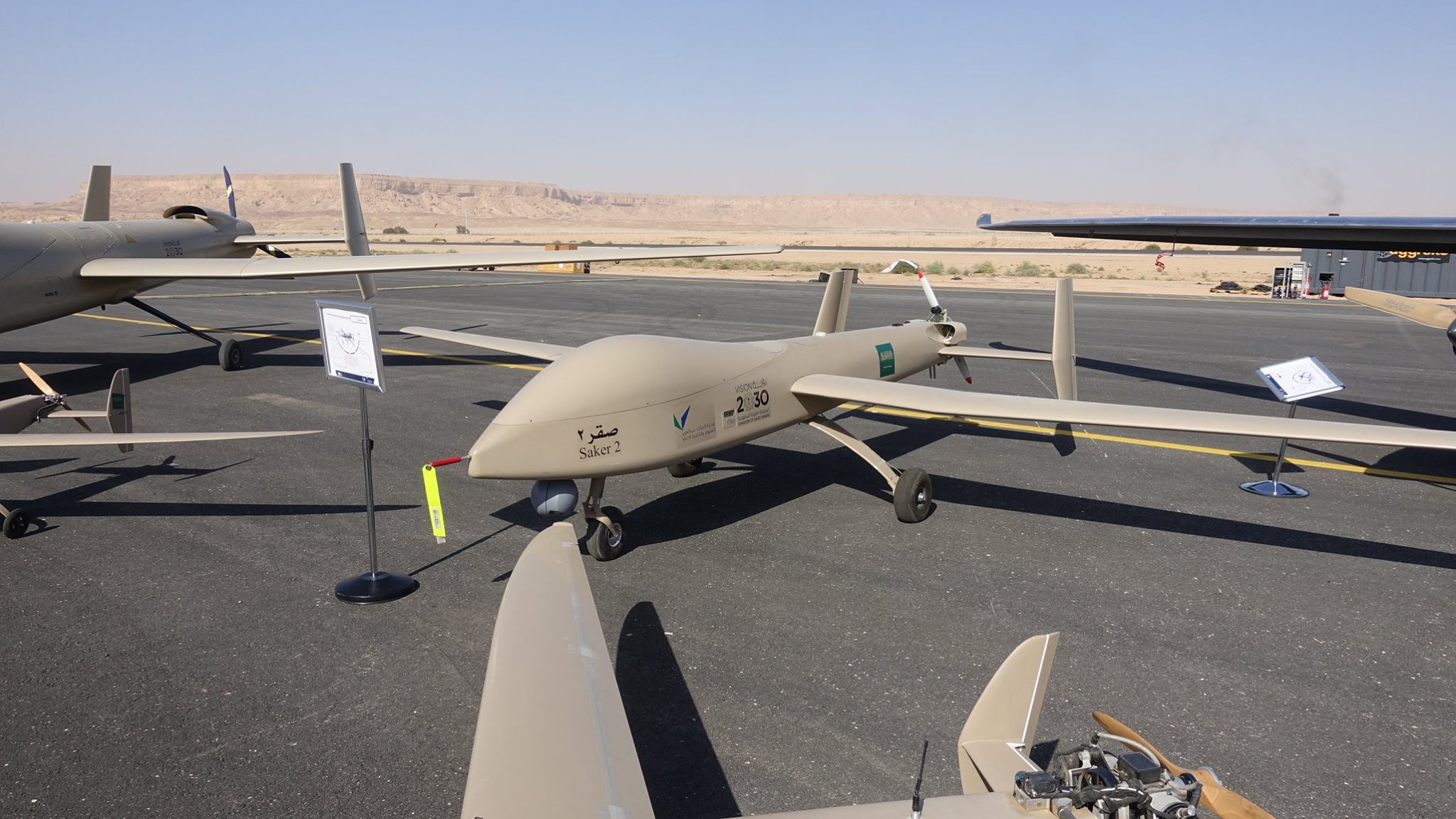
Saker-4
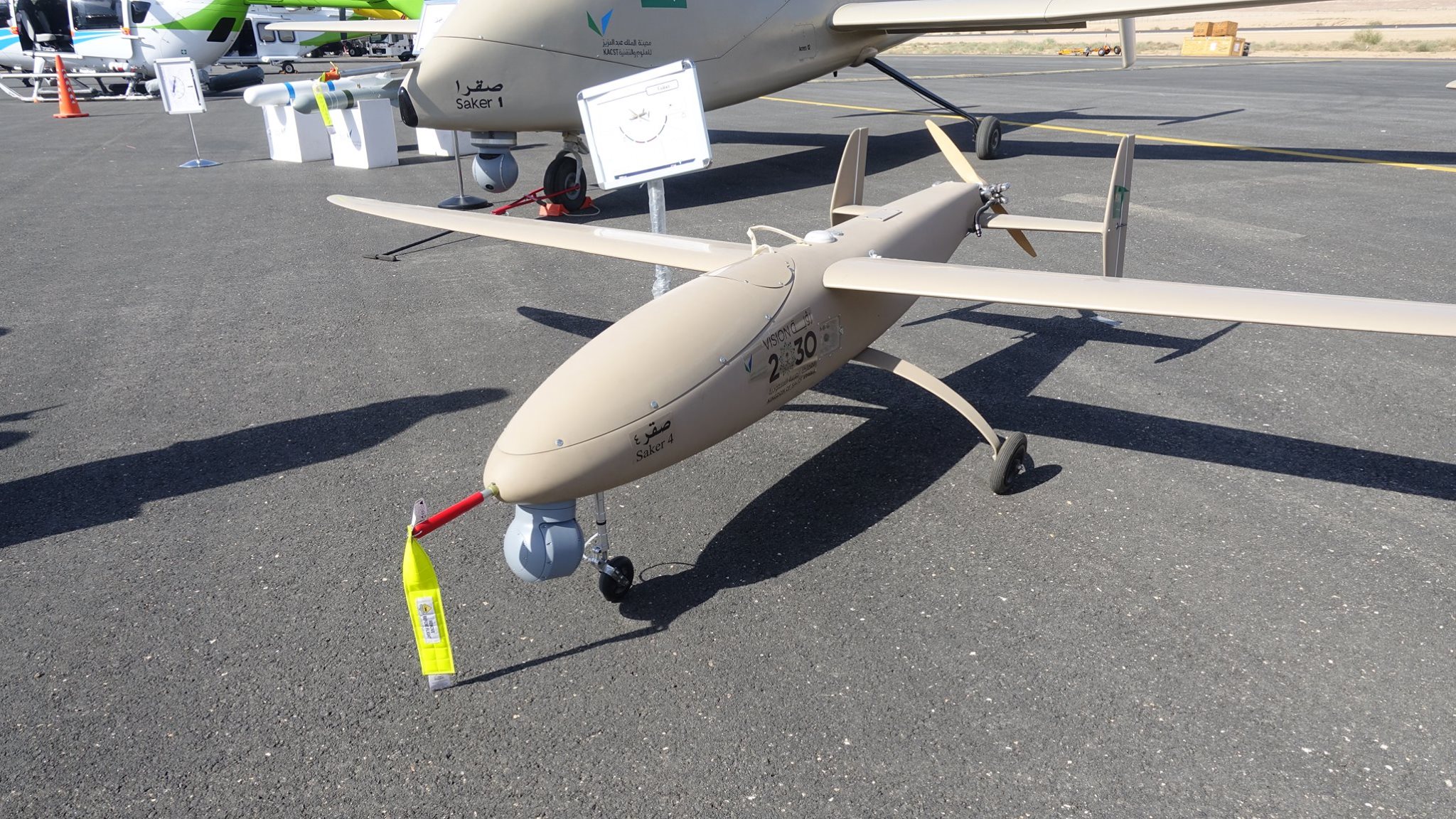
Nawras
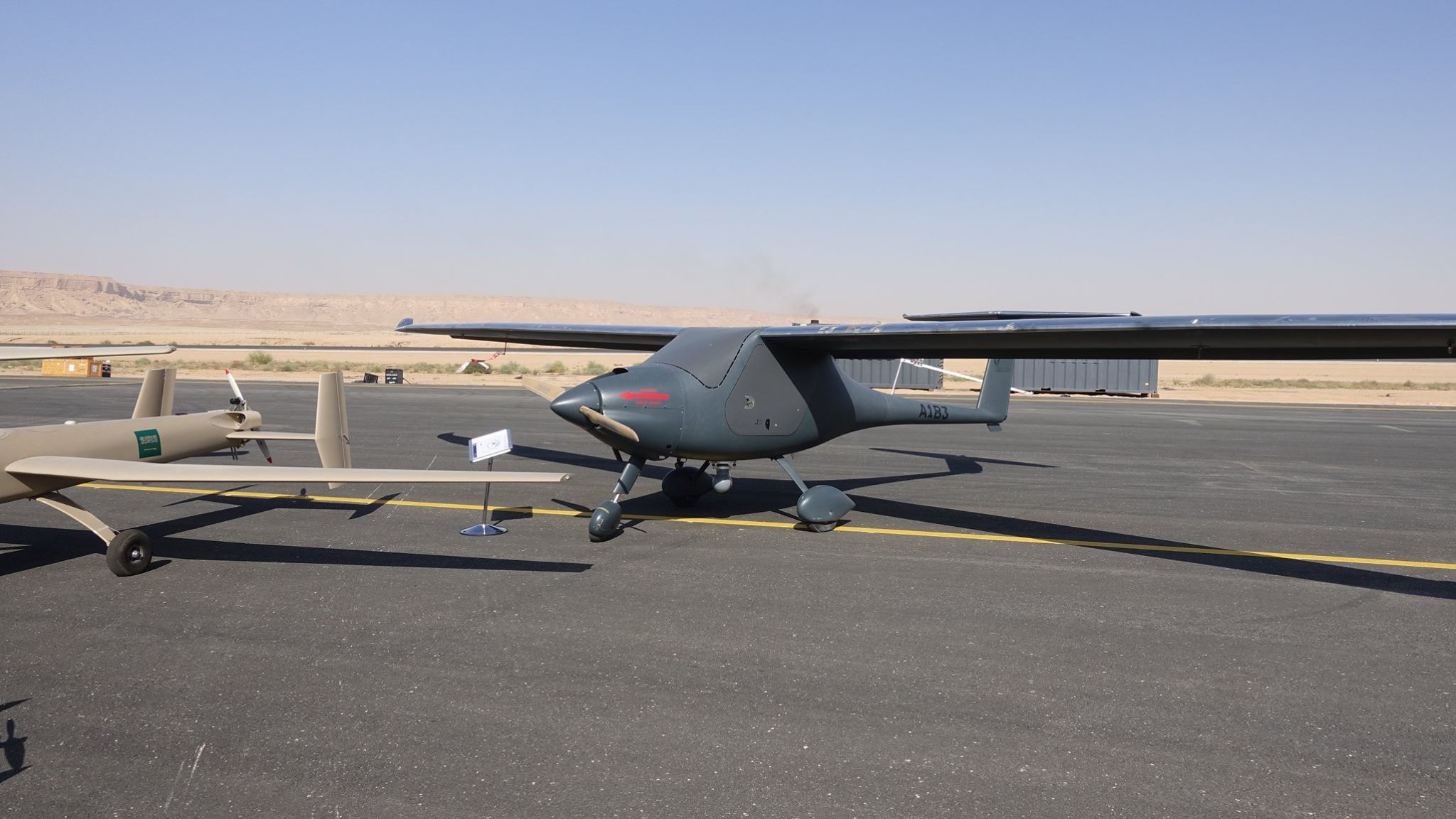
هل دخلت هذه الطائرات الخدمه الفعليه ولدى اي قطاع
بعض المصدر تتحدث انه تم انتاج 38 طائرة من طراز صقر

تعمل المدينة حالياً على تطوير طائرتي “صقر 1″ و”صقر 4” من دون طيار “بما يشمل ديناميكية الهواء، تصميم الهياكل أنظمة الدفع، أنظمة الاتصالات وأنظمة التحكم”، وفق ما أشار المسؤول. ويُضيف: “نحن نعمل على تحسين أداء الطائرتين ومعرفة نوع المشاكل التي قد تواجهها كما والعمل على المزيد من الحلول”.
http://defense-arab.comdefense-arab.comdefense-arab.comdefense-arab.comdefense-arab.comdefense-arab.comdefense-arab.comdefense-arab.comdefense-arab.comdefense-arab.comdefense-arab.comdefense-arab.com/wp-content/uploads/2019/11/IMG_4825-678x381.jpg
إن نظام صقر 1، هو عبارة عن طائرة ذات حمولة 150 كيلوغراما، وزنها عند الإقلاع 1100 كيلوغراماً تقريباً، وقادرة أن تصل لارتفاع 15 ألف قدم. هنا، أشار الشهري إلى أن المدينة “تعمل على تحسين أداء هذا النوع من الطائرات ليبلغ ارتفاعها إلى حوالى 20 ألف قدم، وعلى أن تصل مواصفاتها إلى تلك الخاصة بمواصفات الطائرات بلا طيار المنتمية إلى المجموعة الرابعة (Group 4)”. هذا وتم إجراء عمليات التسليح لهذا النوع من الطائرات و “تكللت بالنجاح”، يضيف المسؤول.
Group 4
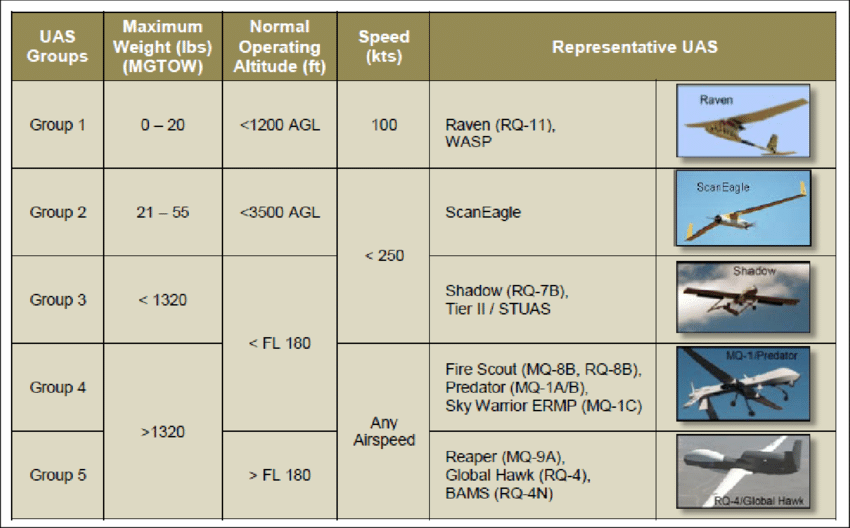
http://defense-arab.comdefense-arab.comdefense-arab.comdefense-arab.comdefense-arab.comdefense-arab.comdefense-arab.comdefense-arab.comdefense-arab.comdefense-arab.comdefense-arab.comdefense-arab.com/wp-content/uploads/2019/11/IMG_4825-678x381.jpg
إن نظام صقر 1، هو عبارة عن طائرة ذات حمولة 150 كيلوغراما، وزنها عند الإقلاع 1100 كيلوغراماً تقريباً، وقادرة أن تصل لارتفاع 15 ألف قدم. هنا، أشار الشهري إلى أن المدينة “تعمل على تحسين أداء هذا النوع من الطائرات ليبلغ ارتفاعها إلى حوالى 20 ألف قدم، وعلى أن تصل مواصفاتها إلى تلك الخاصة بمواصفات الطائرات بلا طيار المنتمية إلى المجموعة الرابعة (Group 4)”. هذا وتم إجراء عمليات التسليح لهذا النوع من الطائرات و “تكللت بالنجاح”، يضيف المسؤول.
Group 4

مشروع تطوير طائرة صقر 4
أما طائرة صقر 4، فهي قيد التطوير حالياً وهي قادرة على حمولة 3 كيلوغرامات، وزنها عند الإقلاع 25 كيلوغراماً وأظهرت التجارب قدرتها على الوصول إلى ارتفاع 11 ألف قدم. يُشار إلى أن الطائرتين مزوّدتين بكاميرات نهارية وليلية كما تتركز مهامهما على الاستطلاع والمراقبة. وتم تصنيع هذه النماذج من الطائرات محلياً بإستخدام الألياف الكربونية ذات القوة العالية وبالإضافة إلى خفة وزنها.
نسخة الاولية من طائرة 4
نسخة المطورة من طائرة صقر 4
ممتاز اعتقد انها مهمه لعمليات حفض الامن الداخلي وقد يكون جهاز امن الدوله احد المشغلين لبعض طرازاتها
طائرة صقر امامها خطوتين فقط وتصبح من اقوى درونات العالم في فئته
الخطوه الاولى الحموله: حمولتها من الاسلاحه يجب ان تصل الى ٢٠٠ كيلو
الخطوه الثانيه الارتفاع: سقف الارتفاع يجب ان يصل الى سقف ٨ كيلو متر
الخطوه الاولى الحموله: حمولتها من الاسلاحه يجب ان تصل الى ٢٠٠ كيلو
الخطوه الثانيه الارتفاع: سقف الارتفاع يجب ان يصل الى سقف ٨ كيلو متر
التي في الصورة هي صقر 4 ، وهي تصميم صقر 1 scaled-down بعدها تم ازالة الbulge لانه لاحاجة لها في النسخة المصغرة لعدم توفر الsatcom
اعتقادي انهم سيتخلون عن التصاميم المصغرة عن صقر ، لصالح تصاميم افضل لهذا الحجم
أظنها بروتوتايب وسيستقرون على نسخه ٤التي في الصورة هي صقر 4 ، وهي تصميم صقر 1 scaled-down بعدها تم ازالة الbulge لانه لاحاجة لها في النسخة المصغرة لعدم توفر الsatcom
اعتقادي انهم سيتخلون عن التصاميم المصغرة عن صقر ، لصالح تصاميم افضل لهذا الحجم
تعديلات على أجنحة طائرة نورس 2

UAVOS INC. company in collaboration with King Abdulaziz City for Science and Technology (KACST), Saudi Arabia, is working on scientific research and development of the Flight Control System.
As part of the project, we have carried out deep modernization of Pipistrel. The aircraft converted into UAV has been integrated with UAVOS INC. autopilot, wings have been modified to carry suspensions for payload and electrical circuitry has been rearranged.
The unmanned aircraft Pipistrel has been successfully tested and has been commissioned by theKACST.
تعمل شركة UAVOS INC بالتعاون مع مدينة الملك عبد العزيز للعلوم والتكنولوجيا على البحث العلمي وتطوير نظام التحكم في الطيران.
تم تحويلها إلى الطائرات بدون طيار مع الطيار الآلي وتم تعديل الأجنحة لتحمل تعليق الحمولة وتم إعادة ترتيب الدوائر الكهربائية.
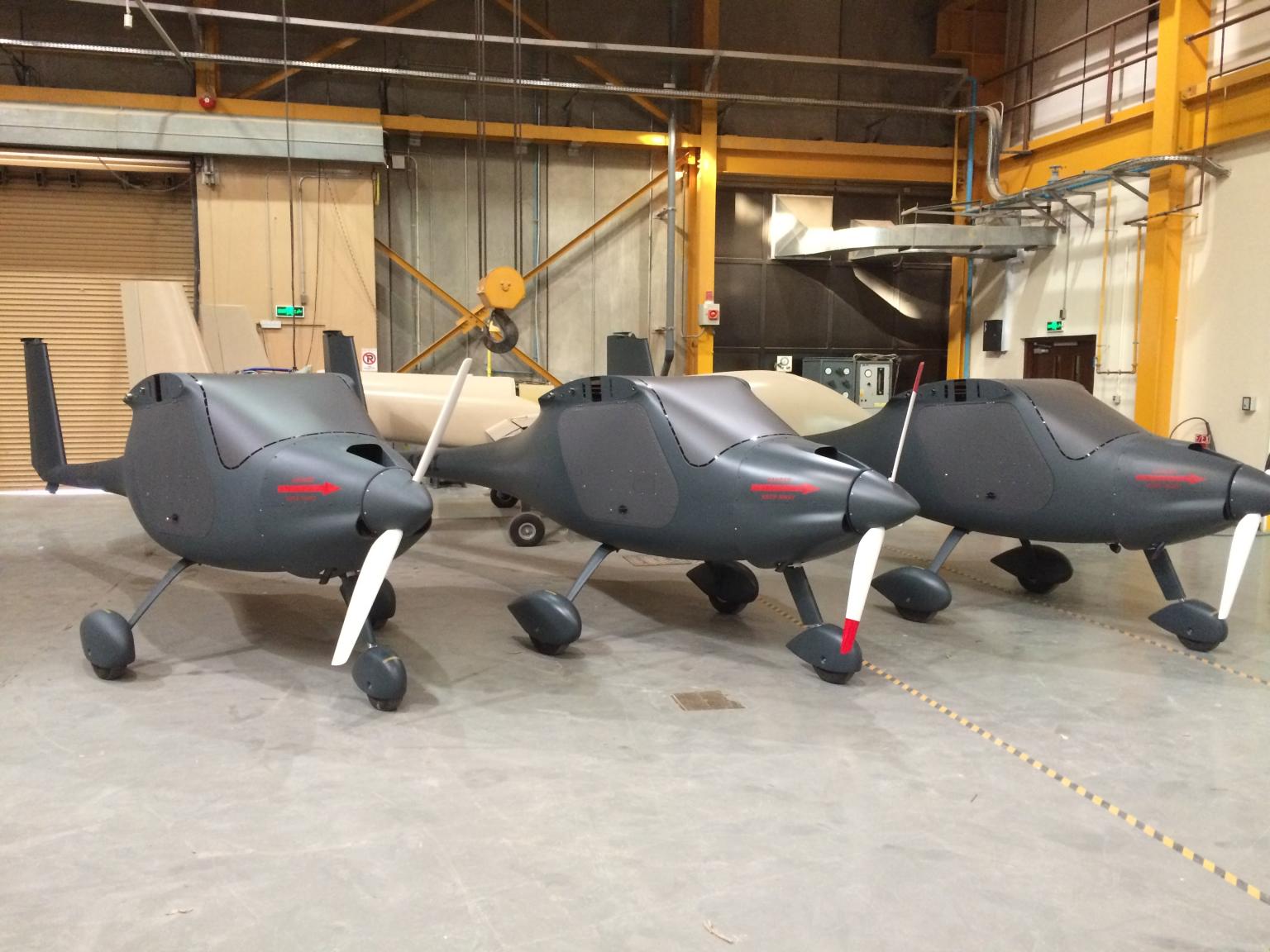
و يستمر تحديث طائرات KACST
تحديث طائرة نورس
الى نسخة 2
يوجد نسختين من طائرة نورس محدثه
ALBATROSS 2.1
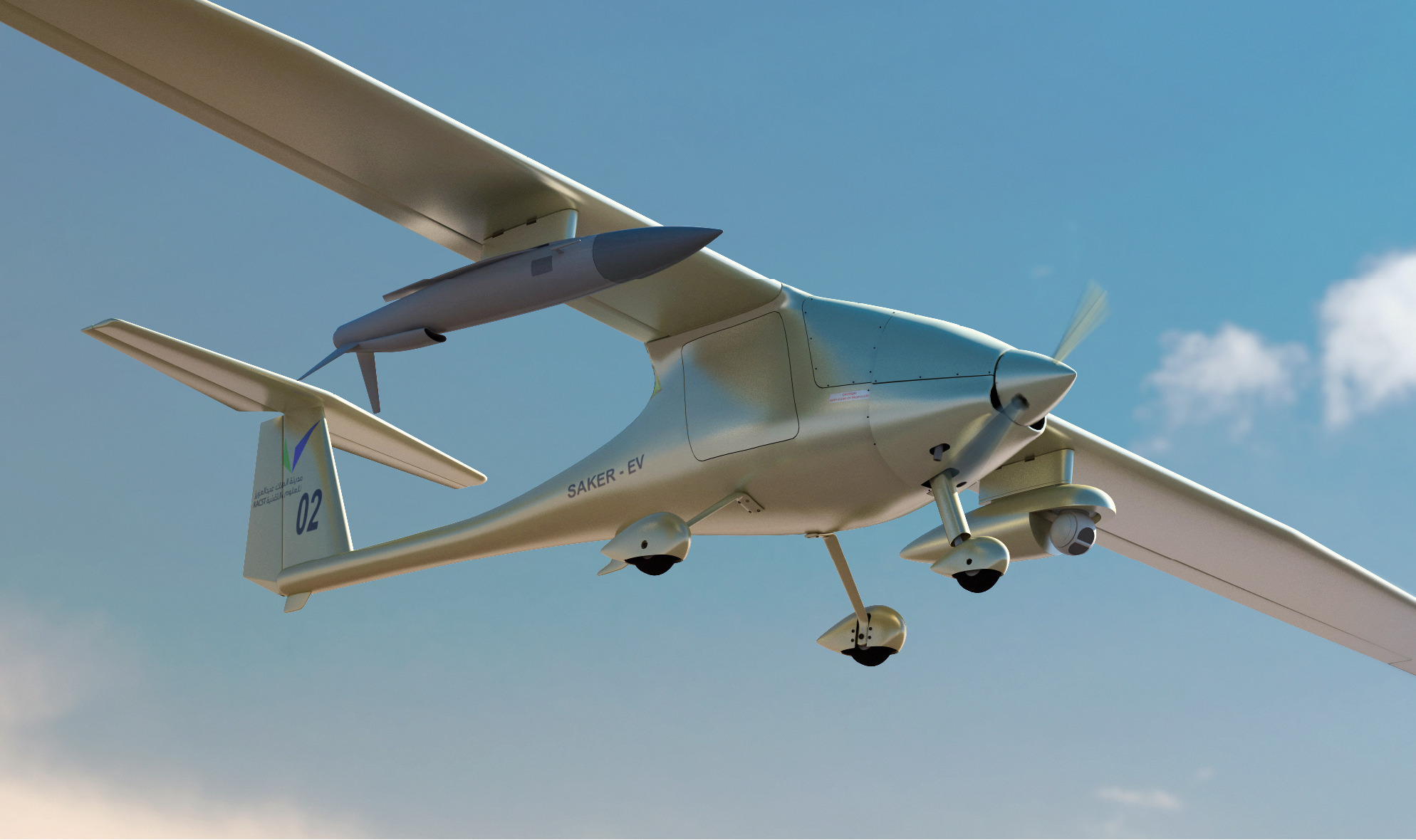
ALBATROSS 2.2

ALBATROSS with drone
ALBATROSS 2.2. The aerodrome
based drone with completely automatic
takeoff, en-route flight and landing.
تحديث طائرة نورس
الى نسخة 2
يوجد نسختين من طائرة نورس محدثه
ALBATROSS 2.1

ALBATROSS 2.2
ALBATROSS with drone
ALBATROSS 2.2. The aerodrome
based drone with completely automatic
takeoff, en-route flight and landing.
- Payload delivery and autonomous transporting
- Application
- Video surveillance and monitoring
- Target drone dropping up to 280 kg (617 lbs)
- Flying R&D laboratory (meteorology, hydrology etc.)
Albatross 2.2 carrier is used to monitor the Earth surface.
- Jamming
- Radio relay
- Target pointing and designation
- The carrier is made of composite material with low RCS
- Diagnostics, flight planning and remote control can be performed
- using a wireless network connection
UAV is converted from a manned Pipistrel Sinus aircraft.
Takeoff, en-route flight and landing of the drone are fully
automatic. Havihg entered a flight mission into GCU, an operator
presses the button to permit takeoff; all next procedures are done
automatically.
Proprietary Autopilot.
The reinforced fuselage and the gear of Albatross 2.2 are
engineered to endure multiple takeoffs and landings during a day,
as well as great maneuvering accelerations and high
speed.
OPERATION
Parameters
Takeoff, en-route flight and landing of the drone are fully
automatic. Havihg entered a flight mission into GCU, an operator
presses the button to permit takeoff; all next procedures are done
automatically.
Proprietary Autopilot.
The reinforced fuselage and the gear of Albatross 2.2 are
engineered to endure multiple takeoffs and landings during a day,
as well as great maneuvering accelerations and high
speed.
OPERATION
Parameters
- Operation temperature
- Level surface
- Runway length, not less than
- Runway width, not less than
- Takeoff and landing on runway
- Ground support equipment
Value
- -40…+50 (-40 ...122F)
- Airdrome (prepared runway)
- 850m (touchdown accuracy-250 m)
- 25m (touchdown accuracy-10 m)
- Fully automatic
- Not required
PERFORMANCE
Parameters
Parameters
- Cruising speed (75% power)
- Operation range
- Endurance (std tanks)
- Service ceiling
- Max load factor permitted (x 1,8)
- Fuel consum. at cruis. speed
- ENGINE ROTAX
- Generator
Data
- 200 km/h (124 mi/h)
- 5400 km(3355 mi)
- with 30 min reserves
- 28 hours
- 8,000 m (26246 ft)
- +4 g - 2 g
- 12,4 l/hour (3,35 gl/h)
- 912IS
- 3kW - 12V
GENERAL CHARACTERISTICS
Parameters
Parameters
-
- Wing span
- Length
- Height
- Wing area
- Aspect ratio
- Empty weight
- Max. takeoff weight
- Fuel tanks capacity
- Max payload
- Parachute
Data
- 15 m (49,2 ft)
- 6.6 m (21,65 ft)
- 1.7 m (5,57 ft)
- 12,26 m2 (132 ft2)
- 18.3
- 370 kg (815 lbs)
- 850 kg (1873 lbs)
- 350 l. (92 gal)
- 280 kg (617 lbs)
- Ballistic
لي الفخر والشرف اني اعمل في هذه المدينة❤?
مشيراً إلى أنه تم الانتهاء من (صقر 1A) وهو الجيل الأول من حيث تجربتها وتدريب الكوادر السعودية خلال الست سنوات الماضية، ومن ثم الانتهاء من الجيل الثاني (صقر 1B)، كما تم تصنيع نظام واحد مكوّن من طائرتين وغرفة عمليات وهو نظام مطوّر عن الجيل الأول الذي يحتوي على اتصال بواسطة الأقمار الصناعية والذخائر، لافتا النظر إلى أنه يتم الآن العمل على الجيل الثالث لهذه الطائرة وهو صناعة 4 طائرات وغرفة عمليات تنتهي في 2018م.
https://www.spa.gov.sa/1626347
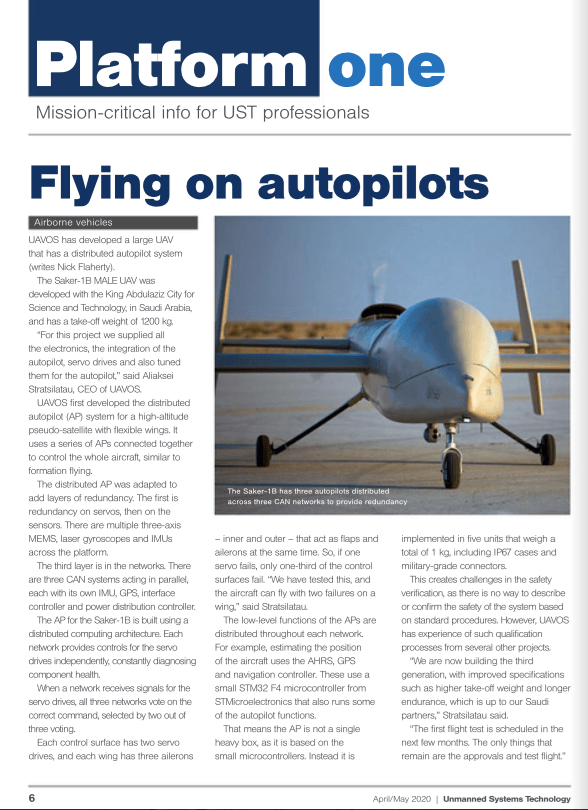
UST 031
Highlights in this issue include a conversation with Jennifer Andrews, Bell's project lead on a major NASA project. We have dossiers on the EasyMile EZ10 shuttle commuting platform and Turbotech TP-R90/TG-R55 powertrain. Our focus articles look at the subjects of engine ancillary systems and...
ust-media.com
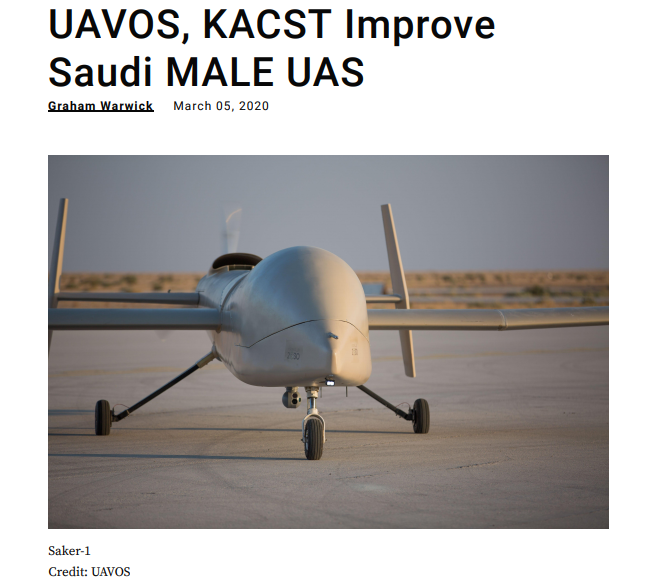
R&D company UAVOS has revealed an improved version of Saudi Arabia’s Saker-1 medium-altitude, long-endurance (MALE) unmanned aircraft system (UAS) developed with King Abdulaziz City for Science and Technology (KACST). KACST unveiled the Predator-class Saker-1 in 2017. UAVOS says the -1B version is a result of 10 years of R&D work with KACST on flight control systems. The partners have also jointly developed an unmanned version of the Robinson R22 light helicopter. Capable of flying for 19 hr. at altitudes up to 16,500 ., the Saker-1B has completed 1,000 hr. of flight tests, UAVOS says, including more than 500 hr. of day/night mission flying and heavyweight landing tests at the maximum takeoff weight of 2,500 lb. Several different surveillance payloads have been tested to demonstrate readiness for operation, the company says. Capable of fully autonomous operation, the UAS uses a direct radio link for command and control within line of sight, switching to satellite communications beyond line of sight. Designed to operate in a harsh desert environment, the Saker-1B is equipped for automatic takeoff and landing, has redundant avionics and UAVOS says its autopilot design provides data security and resistance to jamming
المواضيع المشابهة
- الردود
- 0
- المشاهدات
- 693
- الردود
- 0
- المشاهدات
- 315
- الردود
- 3
- المشاهدات
- 1K
- الردود
- 0
- المشاهدات
- 622
- الردود
- 6
- المشاهدات
- 2K

